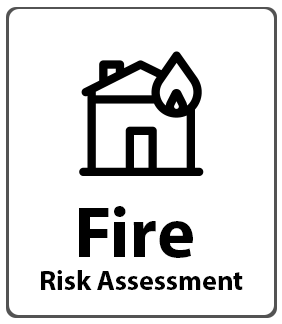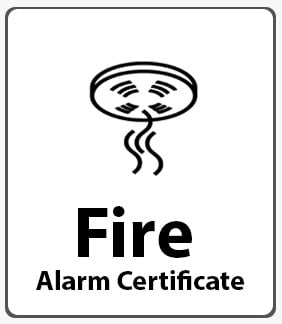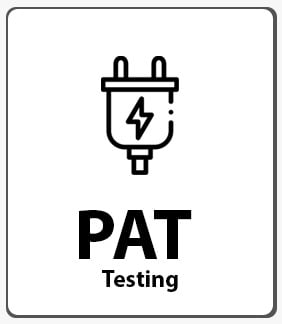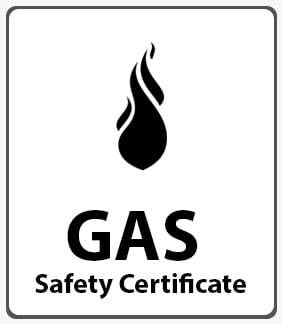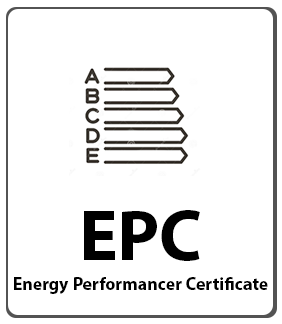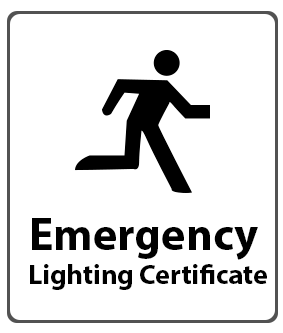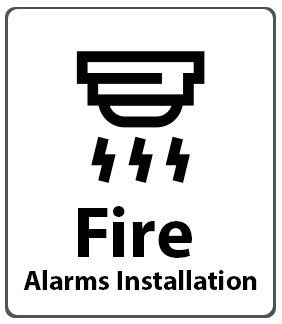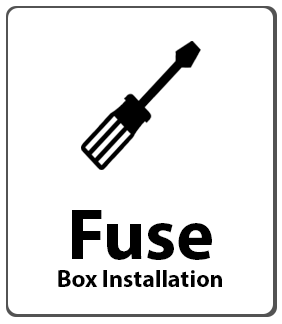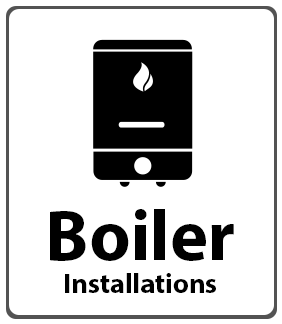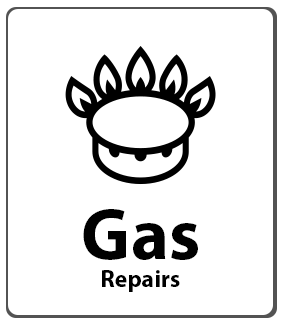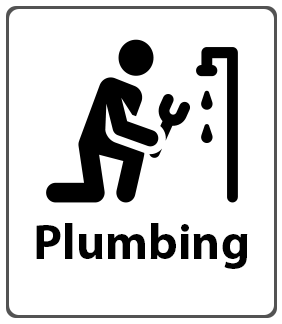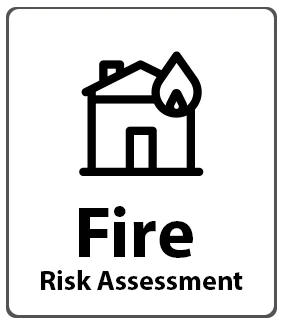
Fire Risk Assessment for Communal Areas
A fire risk assessment for communal areas is crucial for ensuring the safety of shared spaces like stairwells, corridors and lobbies in residential properties. It helps in identification potential fire hazards, assesses and effectiveness of safety measures. When there are changes in occupancy or the layout of communal areas.
These assessments help to minimise fire risks, make sure that fire fighting equipment is easily accessible and improve evacuation plans. Non-compliance can result in severe legal penalties.
Select Your Property as appropriate and get quote in 30 seconds!
Communal Area
- Single storey communal area £109
- Two storey communal area £149
- Three storey communal area £179
What Are Communal Areas?
Communal areas are shared spaces in buildings or a property that are used for occupants or tenants. These areas are critical for everyday use, such as coaxial interactions, movement and must be kept clean, safe and free from fire hazards.
A communal area refers to any part of a building that is shared by all occupants such as staircases, hallways and shared facilities. These spaces are integral to the functioning of residential buildings and how they meet specific safety regulations.
Communal Areas:
Corridors
A building’s corridors act as routes between its many sections. They are crucial escape routes in terms of fire safety and need to be free of obstructions at all times to guarantee a secure evacuation in the event of an emergency.
Stairwells
In addition to serving as vital escape routes, stairwells offer vertical access within buildings. Stairwell obstructions, such as bikes or strollers, must be removed in order to facilitate evacuation attempts in the event of a fire.
Lobbies
Often, lobbies are the first public areas one enters a building. Maintaining fire doors and alarms in this region is essential for overall fire safety compliance as they serve as important points of entry and escape.
Shared Kitchens
Because they have cooking appliances, shared kitchens in community living spaces like HMOs are high-risk areas. The use of fire safety equipment, such as extinguishers and alarms, to reduce hazards should be the main emphasis of fire risk assessments.
Laundry Rooms
Because of the accumulation of lint and electrical appliances, laundry rooms are a fire hazard. To reduce the risk of fire, fire safety equipment must have clear access and be maintained regularly.
Entrances and Exits
A building’s entrances and exits are essential for fire evacuation. Ensuring that doors adhere to fire safety regulations and that these spaces are unobstructed can aid in ensuring that residents can safely evacuate during an emergency.
Parking Areas
Parking lots need to be inspected for possible fire threats, such as combustible materials, especially if they are underground or enclosed. To ensure safety in these places, appropriate signage and easily accessible evacuation routes are essential.
Outdoor Spaces
It is necessary to incorporate outdoor common areas like gardens and terraces into fire safety assessments. Essential factors to take into account are well-lit routes and the secure storage of potentially combustible goods.
Legal Requirements for Fire Risk Assessments
Fire risk assessments are legal requirements or properties with communal areas under the Regulatory Reform (Fire Safety) Order 2005. This legislation ensures that all shared spaces in commercial and residential properties are regularly assessed for fire hazards and safety measures are implemented to protect occupants.
Overview of the Regulatory Reform (Fire Safety) Order 2005
This legislation mandates that a “responsible person” conducts regular fire risk assessments. It also applies to non-domestic residential properties with communal areas. The assessment must evaluate fire risks and provide solutions to minimise hazards making sure that escape routes are clear, fire fighting equipment are clear and alarms are functional.
Responsibilities of Property Managers and Owners
It is legally required of property managers and owners to regularly conduct and maintain fire risk assessments in common areas. By resolving any hazards found, they must make sure the structure conforms with fire safety rules. They should also routinely review assessments, particularly following structural modifications or the move-in of new tenants.
Consequences of Non-Compliance
Neglecting to adhere to fire safety laws may result in severe legal and financial ramifications. These include steep penalties, jail time, and maybe having your insurance cancelled. In the case of a fire, non-compliance also significantly increases the risk to inhabitants.
Who Can Conduct a Fire Risk Assessment?
A “competent” person is one who possesses the requisite training, experience, and understanding to assess fire hazards and put in place suitable safety precautions. This person must conduct a fire risk assessment. A professional fire risk assessor is not always necessary for this, but the person doing the assessment must be competent to evaluate all pertinent fire safety elements.
Qualifications and Competency Requirements
The individual performing the evaluation needs to be aware of potential threats, comprehend fire safety rules, and be familiar with the layout of the property. Many property owners prefer to hire a qualified professional with specific training in fire risk assessments, such as accreditation from recognized bodies like the Fire Protection Association or BAFE-accredited assessors, even though formal qualifications are not necessarily required.
Role of Property Owners vs. Professional Fire Risk Assessors
If property owners or managers are certain that they can evaluate every possible risk, they can carry out the fire risk assessment on their own. Nonetheless, employing a qualified fire risk assessor is advised for more intricate structures or high-risk regions. Professionals minimise liability and improve safety by making sure that all legal criteria are satisfied and by applying their specialist knowledge to complex fire safety issues.
What Does a Fire Risk Assessment Involve?
- Key Elements of an Assessment:
- Identification of Fire Hazards
A fire risk assessment begins with identifying fire hazards such as faulty electrical equipment, flammable materials and unattended heating devices. These steps for understanding the possible sources of ignition that lead to fire.
- Assessment of Flammable Materials
This involves evaluating all materials in the premises could fuel and fire, accumulated waste and flammable liquid gases. Proper management and storage of these materials are key to minimise fire risks.
- Evaluation of Fire Safety Equipment
Extinguishers and fire blankets are examples of firefighting equipment that needs to be inspected to make sure they are in good operating order, in the right location, and easily accessible. Their efficacy depends on routine testing and maintenance.
- Review of Emergency Evacuation Strategies
To make sure that all escape routes are accessible, well-marked, and unobstructed, the evacuation plan is reviewed. This entails taking vulnerable people’s needs into account and making sure emergency exits are operational.
- Analysis of Fire Alarm Systems and Emergency Lighting
The fire alarm system ought to be enough for the size of the building, and spaces utilised at night need to have emergency lights installed. To make sure both systems work in an emergency, they should be tested on a regular basis.
Frequency of Fire Risk Assessments
Factors Influencing Assessment Frequency
Regular fire risk assessments are necessary to guarantee continued compliance and safety. The type of property and how it is used will determine how frequently it is reviewed, but generally speaking, reviews should be done once a year.
Recommended Review Timelines Based on Risk Profiles:
The frequency of fire risk assessments might vary depending on a number of factors. These include the building’s characteristics, the occupants’ vulnerability (e.g., individuals who are elderly or disabled), and any recent events (e.g., renovations or fires).
- Low Risk
Assessments can be carried out every two to three years for low-risk properties, like small residential buildings. To identify potential dangers, yearly evaluations should still be conducted on a regular basis.
- Medium Risk
Larger buildings or ones with common areas are examples of medium-risk assets that should be inspected at least once a year, and after any major alterations to the facility, including adding new tenants or changing the layout of the structure.
- High Risk
Properties that are considered high-risk, such assisted living facilities or structures with combustible materials, ought to be evaluated more frequently, with evaluations taking place every six months to a year. Reviews must be done as away if there are any fire-related accidents.
Importance of Regular Reviews and Updates
Conducting routine evaluations is essential to guarantee that the structure complies with fire safety regulations and to spot any emerging risks. Inadequate review procedures may raise the danger of a fire and result in harsh legal repercussions. Updating fire risk assessments contributes to keeping all occupants safe.
Costs Associated with Fire Risk Assessments
Transparent Pricing Structure
Fire risk assessment companies emphasise transparency, Offers fixed price with no hidden costs. This ensures that customers can budget with confidence, knowing the full cost upfront. These services are designed to cover all legal necessary requirements without surprises fees.
Starting Prices and What Factors Influence Costs
The starting price for a fire risk assessment usually ranges from £375 to £400 + VAT, contingent upon the premises’ complexity and size. Costs may increase for larger buildings or those with more common areas, but the prices are still competitive and set.
Free Quote Offer
In order to streamline and clarify the procedure, a lot of businesses provide a free quote. Before moving further with the evaluation, this enables property managers or owners to receive an exact quote catered to their unique building and fire safety requirements.
How to Book a Fire Risk Assessment
Steps to Schedule an Assessment
To schedule a fire risk assessment, contact London Property Inspection directly via phone or through their website form. You’ll provide basic details about your property. You’ll receive a tailored quote. Once confirmed, the assessment is booked, and qualified assessors will be assigned to your premise.
Contact Information for Booking
By contacting the company via their website’s contact form or by calling their free helpline, you can schedule your fire risk assessment. They will swiftly get in touch to arrange for your examination.
Additional Fire Safety Measures in Communal Areas
Keeping Exits Clear
It is essential to exists free from obstructions, such as furniture or bikes to ensure safe evacuation during a fire. Clear exit rules help occupants escape, especially smoke-filled conditions, dark and significantly evacuation risks and time.
Importance of Emergency Lighting
Emergency lighting is essential for providing direction to residents, particularly in cases where electricity is lost. Lighting that is well-maintained and positioned makes escape routes visible, facilitating a quick evacuation in an emergency.
Regular Maintenance of Fire Safety Equipment
Alarms and extinguishers are examples of fire safety equipment that needs to be regularly inspected and maintained. It is legally required to make sure that these instruments are operational and current, and doing so helps to avoid equipment failure in an emergency.
Contact Us for Your Fire Risk Assessment Today
Our professional fire risk assessments can help you make sure your property is safe and compliant. For expert guidance and a customised quote, get in contact with us right now. Plan your assessment right away to safeguard your tenants and property.

